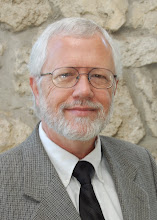Why do Hindus use a swastika? Why is the Cross of St. Peter upside down? And why do Scientologists weave an "S" through two triangles?
Those and more answers are on Religion Facts, which fittingly has the slogan, "Religion is interesting; knowledge is good." The anonymous religion student behind this site has kept his promise: straight facts, no manipulation.
And the 37 featured groups go beyond the usual w orld religions. It's also Aladura of west Nigeria and Cao Dai from Vietnam. It's the Druze of the Middle East and Zoroastrianism, which has one of its fire temples in Yazd, Iran (pictured here).
orld religions. It's also Aladura of west Nigeria and Cao Dai from Vietnam. It's the Druze of the Middle East and Zoroastrianism, which has one of its fire temples in Yazd, Iran (pictured here).
Those and more answers are on Religion Facts, which fittingly has the slogan, "Religion is interesting; knowledge is good." The anonymous religion student behind this site has kept his promise: straight facts, no manipulation.
And the 37 featured groups go beyond the usual w
 orld religions. It's also Aladura of west Nigeria and Cao Dai from Vietnam. It's the Druze of the Middle East and Zoroastrianism, which has one of its fire temples in Yazd, Iran (pictured here).
orld religions. It's also Aladura of west Nigeria and Cao Dai from Vietnam. It's the Druze of the Middle East and Zoroastrianism, which has one of its fire temples in Yazd, Iran (pictured here).Each section has a short intro, then bulleted Fast Facts. Then comes a history of the religion, then beliefs and practices. Footnotes are plentiful and often lead to offline articles.
Better yet are the comparisons. A "Big Religion Chart" gives a quick rundown on each group. Other charts parse out differences among various types of Christians, Muslims and Buddhists.
Although the information is generally objective, the very choices inevitably raise questions. Is Deepak Chopra's center a distinct religion? Are ancient Greek Stoicism and Epicureanism religious? And should you put atheists, who attack the very idea of faith, on a list of faiths?
The author does urge us to continue our own studies. For those, he provides glossaries and book lists, some of them linking to eBay or Amazon.

2 comments:
James,
Sounds like a wonderful resource.
Whilst there seems to be a great deal of commentary about religion these days, there also appears to be precious little explanation about the core tenants of the different religions and what each religion is actually about.
What is needed is a resource which describes the key features and beliefs of each religion in a concise fashion. From what you say, it sounds as though this is exactly what this book does.
Thanks, Andrew. Your observations amount to a sad commentary on religious discourse: more opinions than facts.
Post a Comment